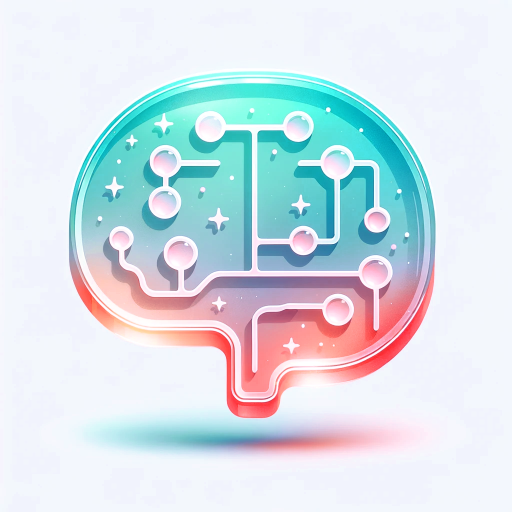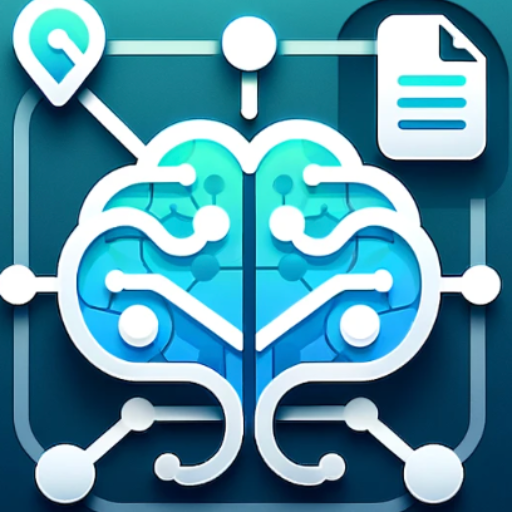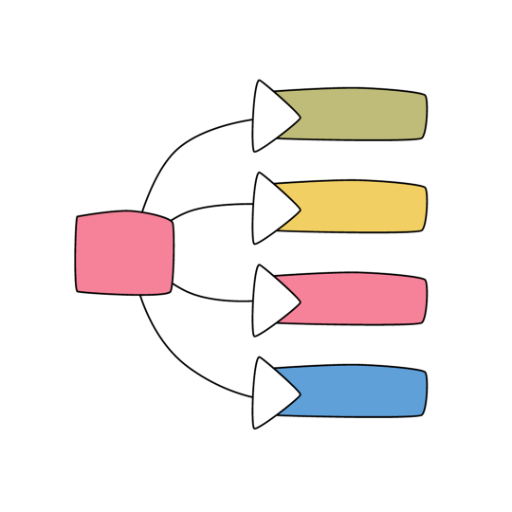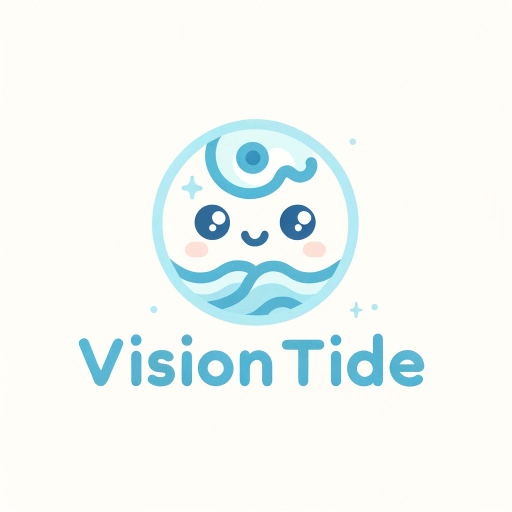Mind Map Structurer-AI-powered tool for structured ideas.
AI-powered tool for structured thinking.
Structure my project ideas
Organize these concepts hierarchically
Indent this information like a mind map
Group these ideas by their relationships
Related Tools
Load More
Mindmap Master I Diagrams, Charts, Planner 🧠
Generate an ultra-cool mind map from your concept, a link or an upload file. Support Mindmap, Flowchart, Sequence Diagram, Gantt Chart, Class Diagram, State Diagram, Pie Chart, Bar Chart and more.

Concept Map
Creating detailed concept maps of Solana's blockchain technology, focusing on key concepts, main ideas, and terms.

Mind Map Generator
Create Mind Map from Document or URL

Mind Map Maestro
私はあなたのインプット情報を全て構造化データとしてマインドマップ化します。あなたがマインドマップ化したい情報をそのまま直接入力してください!

Mindmap
An innovative GPT designed for self-learning, using real-time mind maps and automatic topic expansion to overcome the linear, disjointed interaction of traditional ChatGPT. [email protected]

MindMap Maker
I craft a beautiful MindMap for you!
20.0 / 5 (200 votes)
Introduction to Mind Map Structurer
Mind Map Structurer is a tool designed to help individuals and teams organize and visualize complex information in a structured, hierarchical format. It focuses on creating clarity by breaking down large concepts into smaller, more manageable sub-concepts and categorizing them effectively. The primary purpose is to assist in organizing thoughts, ideas, or projects, allowing users to easily explore relationships, dependencies, and layers of information. It mirrors the functionality of a traditional mind map but places a special emphasis on logical grouping and clear hierarchy, making it suitable for tasks that require detailed planning and structured thinking. For example, in a scenario where a user is planning a large project, Mind Map Structurer helps break down the project into main goals, sub-tasks, and action items, highlighting their interconnections. This allows for better task management, resource allocation, and identifying potential roadblocks early in the planning phase.

Main Functions of Mind Map Structurer
Hierarchical Concept Breakdown
Example
A user needs to outline the structure of a research paper. Mind Map Structurer helps them organize the paper into primary sections like 'Introduction,' 'Literature Review,' 'Methodology,' etc. Each section is further broken down into subtopics (e.g., 'Key Studies' under Literature Review).
Scenario
In academic writing or content creation, this function allows users to break down large bodies of information into logically ordered parts, making it easier to understand how different sections relate to each other and ensuring that no major aspect is overlooked.
Visualizing Relationships and Dependencies
Example
A team is planning a software development project. Mind Map Structurer helps map out the dependencies between different modules (e.g., the backend API must be built before the front-end development can start).
Scenario
This function is particularly useful in project management or any collaborative setting where multiple tasks are interdependent. By visually representing these connections, teams can anticipate delays or potential bottlenecks in the workflow.
Task Prioritization and Planning
Example
A business leader needs to prioritize key initiatives for the year. Using Mind Map Structurer, they can break down business goals (e.g., increase revenue, improve customer satisfaction) into actionable projects and rank them by importance.
Scenario
For executives or managers, this function helps in strategic planning by organizing objectives into smaller initiatives, allowing for better prioritization and resource management. It also helps track progress on various tasks and align team efforts with organizational goals.
Ideal Users of Mind Map Structurer
Project Managers and Teams
Project managers can greatly benefit from Mind Map Structurer by using it to organize tasks, visualize dependencies, and ensure that every part of a project is accounted for. It helps them create comprehensive project roadmaps that make it easier for teams to stay on track and collaborate effectively.
Students, Researchers, and Writers
Students and researchers working on complex assignments, theses, or papers can use Mind Map Structurer to organize their research materials, build structured outlines, and ensure all necessary sections are included. Writers, too, can benefit from outlining stories or articles by clearly organizing themes, subplots, or arguments.

How to Use Mind Map Structurer
Visit aichatonline.org for a free trial without login
Go to the official site to access the tool. No sign-in or premium subscription (like ChatGPT Plus) is required to start using Mind Map Structurer.
Gather your main topic or ideas
Before starting, define the main subject or ideas you want to structure. This could be a project, essay, or brainstorming session.
Input your ideas
Enter your concepts or questions, and the tool will help you structure them into hierarchical mind maps for better clarity and visualization.
Refine the structure
Once the initial structure is created, adjust the branches, add sub-concepts, and refine the groupings for better organization and flow.
Save or export your mind map
After finalizing your structured ideas, you can save or export your mind map for future reference or collaboration with others.
Try other advanced and practical GPTs
日语口语老师
Enhance your Japanese conversation skills with AI-powered assistance.

单片机工程师 with Keil uVision 5 - C Code Explainer
AI-powered tool for C code explanations in Keil uVision 5.

緊急弁護士レスキュー!
AI-powered legal support at your fingertips

评论维护专家
AI-powered comment generation tool.

円卓の8人
AI-powered discussion platform for deeper insights

円卓会議AI - Debate Copilot
AI-powered collaborative problem-solving.
日语字典
AI-powered Japanese translation made simple.

教授帮分析通用
AI-driven solutions for deep analysis

Pro市場調査マン
AI-powered market analysis for business insights.

工业机器人智能维修系统
AI-powered industrial robot troubleshooting

(孩子王系列)对错游戏
AI-powered fun for curious minds

智慧之旅Game:稻盛和夫与王阳明的世界
AI-powered game to explore philosophy.

- Content Creation
- Project Planning
- Brainstorming
- Research Organization
- Idea Mapping
Q&A About Mind Map Structurer
What is Mind Map Structurer and how does it work?
Mind Map Structurer is an AI-powered tool that helps organize and visually map out ideas in a hierarchical, structured format. By entering key concepts, the tool creates a mind map that shows relationships between topics, making it easier to analyze and develop ideas.
Can Mind Map Structurer be used for academic purposes?
Yes, Mind Map Structurer is highly effective for academic writing, research organization, and study planning. It helps students and researchers visually break down complex topics, ensuring all aspects of the subject are covered.
How is Mind Map Structurer different from other brainstorming tools?
Unlike traditional brainstorming tools, Mind Map Structurer uses AI to intelligently organize concepts into a logical hierarchy, offering suggestions and refining the structure as more information is added. This ensures a more coherent and efficient organization of ideas.
What are the best practices for using Mind Map Structurer?
Start by outlining your main topic or question. Be clear about your goals, whether it's for planning, problem-solving, or writing. Continually refine the structure as you add more details, and use the mind map as a living document to evolve with your project.
Can I use Mind Map Structurer for team collaboration?
Yes, the tool supports collaborative workflows. You can easily share the mind maps with team members, allowing them to contribute, edit, or suggest improvements in real time.